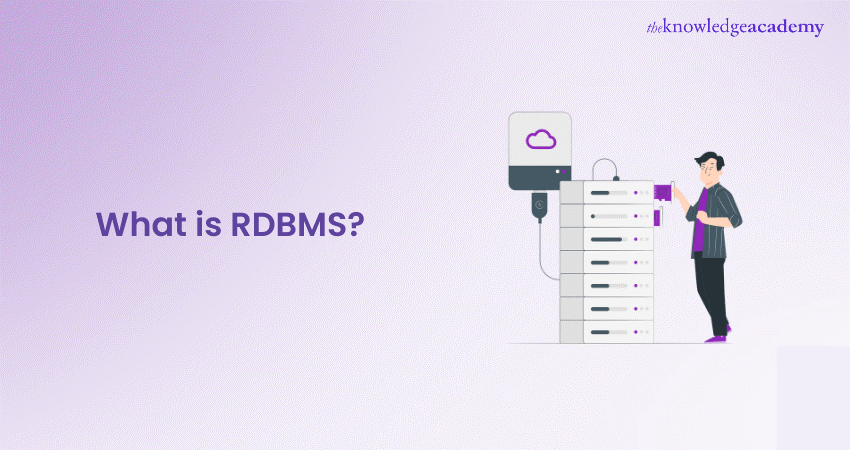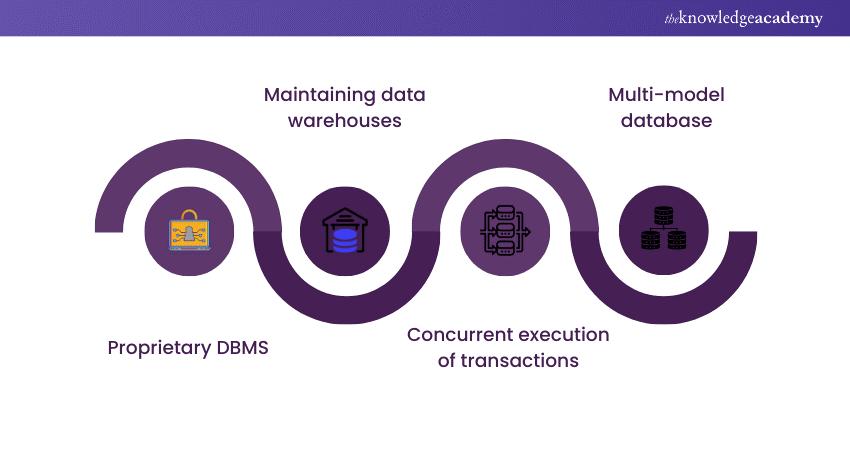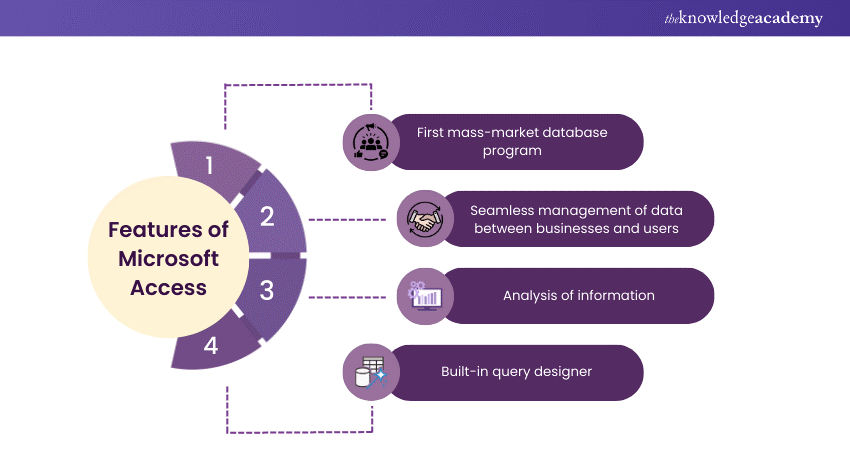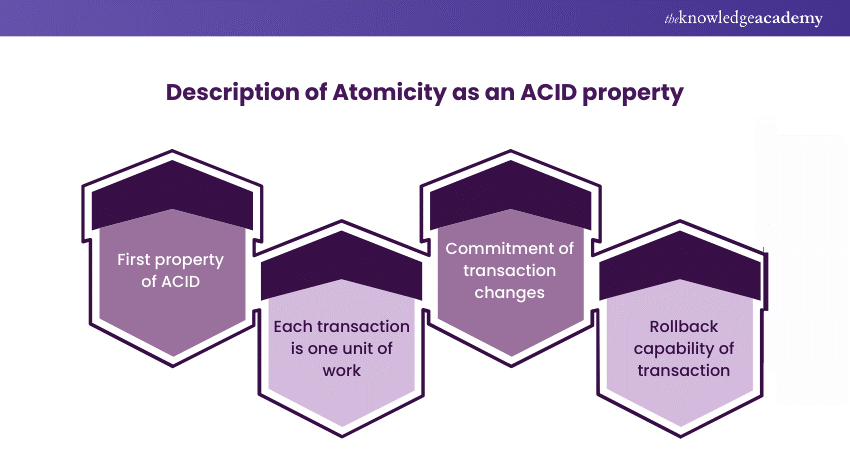We may not have the course you’re looking for. If you enquire or give us a call on +44 1344 203999 and speak to our training experts, we may still be able to help with your training requirements.
We ensure quality, budget-alignment, and timely delivery by our expert instructors.

Businesses have developed a better understanding of What is an RDBMS, thereby adopting better, stronger and faster relational databases to store, organise and manipulate their data with. They have also understood how the process of thoroughly administering a database is a complex task and demands full-time professionals.
Moreover, developers need to generally spend most of their time working on optimising the performance of an organisation’s database. The onset of autonomous technology has supplemented the strengths of cloud-based and machine learning technology for creating new-age relational databases. Learn the fundamentals of What is RDBMS (Relational Database Management Systems) and how they organise and manage structured data.
Table of Contents
1) Understanding What is RDBMS
2) Exploring the types of RDBMS
3) Various features of RDBMS
4) Working of an RDBMS
5) Conclusion
Understanding What is RDBMS
A Relational Database Management System or RDBMS is a database utilised by Database Administrators to store and provide access to inter-related data points. Such databases are based on the intuitive and straightforward structure of the relational model. A relational database comprises tables containing multiple rows, which are referred to as records.
Each record in a relational database is assigned a unique ID known as the ‘key’. Each column in the table contains various attributes of the stored data and every record contains the value for each of these attributes. These values make it easier for relationships to be established among the various data points.
Data is typically stored in a relational database for future utilization in business cases, to establish relationships with other data, and to retrieve the necessary information based on the organization's needs to drive their data-driven growth. The organization can further leverage the data, along with the Relational Database PDF, to generate data-driven insights and develop their software applications accordingly.
Database administrators generally use Structured Query Language or SQL for data storage and management purposes. SQL, a querying language developed by IBM in 1970, is an internationally accepted query standard for any RDBMS.

Exploring the types of RDBMS
Here is a list describing the various types of RDBMS systems:
Oracle Database

Oracle Database, a proprietary Database Management System or DBMS, was developed by Oracle for the purpose of running Online Transaction Processing or OLTP and building and maintaining data warehouses.
OLTP refers to a category of data processing, where-in multiple transactions are executed in a concurrent manner. The database by Oracle is available for usage by organisations in three key modes, namely on-premises, cloud-based or hybrid. The Oracle Database utilises SQL to update and retrieve data. It is built as a multi-model database to support many data models on an integrated backend. This means that the database can store, index and perform queries on data in multiple models, namely relational, document-oriented, graph and triplestore.
Manage database structures and configure networks by signing up for Oracle Database 12c: Administration now!
MySQL
MySQL is a popular relational database designed as an open-source software for use in web applications. It is a globally preferred RDBMS well-known for its ease of use, simplicity, scalability and cross-compatibility with other platforms.
Additionally, the MySQL Server can run easily on a computer system, concurrently with other applications, requiring negligible attention. Database administrators can enter SQL statements directly or embed them into code of another language. It is also possible for them to utilise a language-specific Application Programming Interface or API that helps hide the SQL syntax.
Moreover, the MySQL Database is designed to encompass a multi-threaded SQL Server that supports various backends, several client programs, administrative tools and a broad range of APIs. The query language’s excellent speed, security and connectivity makes it a force to reckon with for accessing database hosted on the internet.
Learn about databases and query expressions by signing up for Introduction to MySQL now!
Azure SQL
Azure SQL is built on the SQL Server engine and allows users to migrate their applications seamlessly to the cloud. Users can transfer their skills and experience, and utilise the tools, resources and languages that they are familiar with.
Azure SQL comprises three key products, which are:
a) Azure SQL Database: Provides support for modern cloud-based applications on an intelligent database that facilitates serverless computation. Serverless computing is Amazon’s special feature that enables running applications without involving servers.
b) Azure Server on Azure VMs: Allows organisations to utilise the full versions of SQL Server on the cloud without the hassle of managing on-premises hardware. Licensing costs are also simplified for enterprises when they use SQL Server Virtual Machines or ‘VMs’, which allows them to pay as they use.
c) Azure SQL Managed Instance: Provides organisations with a fully managed Platform as a Service or ‘PaaS’, which is built to handle the majority of the database management functions like patching, upgrading, and monitoring without involving users. The capabilities of a PaaS are built into Azure SQL to help organisations focus on optimisation processes and database administration for domains.
Administer an SQL Server database infrastructure by signing up for Administering Microsoft Azure SQL Solutions DP300 now!
SQL Server

SQL Server is a proprietary RDBMS with the primary function of data storage and retrieval. Developed by Microsoft, it can run either on the same computer or another system on a network. The organisation provides nearly twelve various editions of SQL Server, targeting different audiences and a wide range of workloads including single-machine applications and large-scale internet-facing applications holding many users concurrently.
More importantly, a computer can host one or more instances of SQL Server, where each contains one or more databases. Each database is comprised of one or more ownership groups known as schemas, each of which contains different database objects like views, tables and stored procedures.
Moreover, the databases in SQL Server are stored locally as files, which can be further grouped into filegroups.
Here are a few of the mainstream editions of SQL Server:
a) SQL Server Enterprise edition
b) SQL Server Standard edition
c) SQL Server Web edition
d) SQL Server Business Intelligence
Create, publish and manage data reports by signing up for our SQL Server Reporting Services (SSRS) Masterclass now!
IBM Db2
IBM Db2 is a cloud-native database designed to support low-latency transactions and real-time data analytics. It offers Database Administrators, Enterprise Architects and Software Developers a single engine for running, storing and querying anything via critical applications. It also helps drive decision-making processes and fosters an innovative mindset throughout an organisation.
Furthermore, it is capable of keeping critical applications continuously available with refined security protocols and can deploy Machine Learning models at scale. Organisations can also build their own cloud-native applications with higher Concurrency Control in DBMS and quicker data-driven insights, ensuring smooth operation even during high-demand periods.
IBM Db2 also comes with built-in data encryption, data masking and various access controls to keep highly sensitive data protected on the cloud, in a hybrid setting or on-premises. The service is especially for enterprises to reduce data costs and complexity with the support of an engine designed for OLTP, OLAP and integration of data lakes.
Use queries to retrieve data and perform arithmetic operations, by signing up for our DB2 SQL Training now!
PostgreSQL
PostgreSQL is an object-oriented RDBMS, also known as ‘ORDBMS’, developed by the Computer Science department at University of California Berkeley. The RDBMS is an open-source service and a descendant of the Berkeley code, offering a wide range of features such as:
a) Foreign keys
b) Updatable views
c) Multi-version concurrency control
d) Triggers
e) Complex queries
PostgreSQL is offered to the public with a liberal license, which allows users to use, modify and distribute free of charge for any purpose of a private, academic or commercial kind.
Manage and administer databases effectively by signing up for our PostgreSQL Administration Training now!
Microsoft Access

Microsoft Access is a DBMS developed as part of the Microsoft 365 Office suite. The software is a combination of Microsoft’s relational Jet Database Engine with various Software Development tools and a Graphic User Interface or GUI.
The first release of Microsoft Access was in 1992, and the software has received widespread acceptance ever since. It also has the accord of being the first database program for the masses that use Windows. Access facilitates seamless management of data among both business and enterprise users and helps in the analysis of significant volumes of information in an efficient manner.
Access provides users with an amalgamation of database functionality and capabilities in programming for the creation of easily navigable and user-friendly forms. It is akin to the functions of Microsoft Excel, wherein users can store, edit and view data. Here is a list highlighting some key features of Microsoft Access:
a) User-friendly interface: MS Access offers users an interface that lets them easily create databases and manage them with the help of a drag-and-drop interface. The user-friendly interface makes it convenient for them to create tables, queries, forms and reports without the hassle of technical expertise.
b) Query designer: MS Access comes with a built-in query designer that is powerful enough to let users extract the data they require from tables based on their defined criteria. Other operations are sorting, filtering and aggregating from various tables in the database.
c) Customisable forms: MS Access lets users create custom forms with a user-friendly interface for entering and viewing data in the tables. The forms can also be made to add various controls such as drop-down lists, buttons and text boxes.
d) Automation macros: Access also includes macros which allow users to automate their common tasks in the database, like opening a form or running any queries. These measures can save users time and improve working efficiency.
e) Customisable code: Access lets users write their own custom code with the use of Visual Basic for Applications or VBA language for programming. The VBA programming language allows users to create customised functions and apply automation to complex tasks
Learn to present information in a structured manner by signing up for our Microsoft Access Masterclass now!
Various features of RDBMS
An RDBMS offers organisations a broad range of features that make the storage, management and manipulation of structured data seamless. Here is a list describing the many features of RDBMS:
Atomicity

The feature of atomicity in an RDBMS is one of the four properties of ACID. It ensures that every transaction in a database is treated as one divisible unit of work. Additionally, it makes sure that all changes done to a transaction are properly committed to the database. Otherwise, none of the changes should be committed.
This also means that transactions cannot execute partially, rather they are considered as a single unit. The feature of atomicity helps ensure that a transaction must be capable of being rolled back to its initial state pre-transaction.
Consistency
The feature of consistency in an RDBMS, closely related to Data Independence in DBMS, is the second ACID property, ensuring that the database maintains a valid and expected state before and after a transaction is executed. Consistency also guarantees that the stored data adheres to all predefined constraints, rules, and relationships defined in the database schema.
Moreover, the ACID property also ensures that the integrity of the constraints is preserved and there is no violation of the defined rules in the database during a transaction. In other words, consistency helps ensure that any transaction in the database must affect the data in accepted ways.
Isolation

Isolation is the third ACID property that guarantees the isolated execution of multiple transactions. It ensures that concurrently executing transactions are not interfering with one another.
Every transaction is treated as an isolated and consistent view of the data in the RDBMS. Moreover, a transaction’s intermediate states are not visible to the other transactions executing concurrently until it has successfully committed to the database.
A benefit of this feature is that it prevents concurrent transactions from trying to access or modify the same data. Any unauthorised access or modification could result in inconsistencies or conflicts in the data being affected.
Durability
Durability is the fourth ACID property that guarantees the permanence of a transaction’s effects after it has been committed in the database. The feature ensures that the effects last long even in the case of catastrophic incidents or failure events.
The permanence of a committed transaction’s effects is because they are stored and written to the local disk, so that they remain in spite of a system failure. These changes are typically stored in the non-volatile memory.
Data flexibility
Data flexibility is a feature of an RDBMS wherein users can seamlessly and efficiently adapt the organisational structure of their data to fulfil business requirements. The feature makes the RDBMS capable of handling any changes that occur in the schema, models and relationships of the data. The capacity of the RDBMS to handle these changes without the hassle of disruptions or any modifications. Flexibility can be achieved by using a data model which is scalable and relational.
Working of an RDBMS
An RDBMS follows the working of a relational model to organise data. It typically manages data by utilising tables comprising of rows and columns. Every database has a different number of tables, where each table has its own primary key, which is a unique key for identifying each table.
Now each row in a table of the RDBMS is called a record or a horizontal entity. They typically contain information pertaining to each individual entry. Each column is known as a vertical entity and holds information pertaining to the field.
Prior to the creation of tables in an RDBMS, the following constraints need to be evaluated:
a) Primary keys: A primary key is responsible for uniquely identifying every row in a table. Every table in an RDBMS can have just one primary key, which needs to be unique without any null values.
b) Foreign keys: A foreign key is responsible to link two tables in an RDBMS. This key is held in one table and refers to the primary key that is associated with another table.
c) Check: The check constraint validates that the data in a column or row fulfils a precise condition and that the data held in each column or field is unique.
d) Data integrity: The constraint of data integrity helps ensure that the completeness, consistency and accuracy of data is maintained in the table. More importantly, this constraint ensures that there is a lack of variation between two consecutive updates of a record or row. This distinction in the updates indicates that the information contained is error free.
Gain an understanding of data modelling, storage and retrieval by signing up for our Relational Databases & Data Modelling Training now!
Conclusion
We hope that you have now understood What is RDBMS, and its crucial role in data management. An RDBMS basically provides users with an efficient and structured approach to the storage, organisation and retrieval of organisational data. RDBMS offers various benefits such as consistency, security and powerful data querying capabilities.
Manage and modify data efficiently by signing up for our Introduction to Database Training now!
Frequently Asked Questions
What are the Other Resources and Offers Provided by The Knowledge Academy?

The Knowledge Academy takes global learning to new heights, offering over 3,000 online courses across 490+ locations in 190+ countries. This expansive reach ensures accessibility and convenience for learners worldwide.
Alongside our diverse Online Course Catalogue, encompassing 19 major categories, we go the extra mile by providing a plethora of free educational Online Resources like News updates, Blogs, videos, webinars, and interview questions. Tailoring learning experiences further, professionals can maximise value with customisable Course Bundles of TKA.
Upcoming Programming & DevOps Resources Batches & Dates
Date
 Introduction to Database Training
Introduction to Database Training
Fri 20th Jun 2025
Fri 22nd Aug 2025
Fri 17th Oct 2025
Fri 19th Dec 2025






 Top Rated Course
Top Rated Course


 If you wish to make any changes to your course, please
If you wish to make any changes to your course, please


